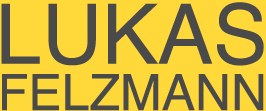Daniele Muscionico 25. Februar 2004 Nr.46
Lukas‘ Gospel: “Landfall “, the exhibition and the book.
Lukas Felzmann a photographer from Zürich reappears with an extradinory work: Landfall, a literary image journey along the seams of civilizations in the western parts of the USA. The base for the exhibition of the Fotostiftung Schweiz is a visual reader, the first condensation of Felzmann’s work in and on nature. Tonight in the exhibition the artist will talk with Iso Camartin about the relationship of literature and photography.
In the beginning was the book. From books the photographer has learned, books are nourishment, instrument and object. After 15 years, Lukas Felzmann, son of a publisher, has realized his first publication. He took his time. Books are too important for him to be subjected to the production values of goods. His own, and highly personal version is of rather small dimensions, comparable to a travel guide or a book of poetry. It feels right to use it, it’s not too heavy (and not too light) and whoever holds it – gets wet.
On the title page a black and white photograph shows a flooded landscape, a road leads through a sudden disintegration into a void. It is the last piece of land, the water licks on it and softens the asphalt. As you open the book meadows burn: red.
Journey to the Horizon…
To forget (the origin), to remember (the longing), to fade away (matter) and home. Four thematic cycles, one symbol: nature. Lukas Felzmann, author of this bibliophile gem refuses to reveal information about dates and places. He is a landscape photographer for whom the landscape is a metaphor for states of being. Or a challenge to create a book as a picture landscape. In the publisher Lars Müller he found the congenial partner, in the Fotostiftung Schweiz the commitment to present the images in space, in Landfall an existential title. Landfall: the manifestations of sailors for the moment when the first strip of horizon appears. Felzmann, born in 1959 in Zürich traveled towards his horizon in 1981; California. Instead of the planned one year he stayed until today. He lives in San Francisco, teaches at Stanford University and has made himself an international name as an installation artist and a photographer with the sight of an ecologist. Room for Endangered Species is the name of a installation with 12 camera obscura projections which might represent the tension between nature and culture in the San Francisco Headlands.
Lukas Felzmann works with a large format camera in a terrain he calls home; in the west is the Pacific Ocean and the Farallon Islands, in the east the Coast Ranges, the Central Valley, the Sierra Nevada and the Great Basin Deserts. He tells the the stories of difficult terrain, unexplored regions, unnamed territories. Here wind and water rule carving furrows into the surface of the earth. To make images means for him the making of a sculpture, the interplay between body, space and time.
…and with the birds up and beyond
Landfall shows pictures from several bodies of work, which the artist condensed anew, wove and folded together, the single image becoming a word within his narrative of journey; a journal. Felzmann’s early images are often “objets trouvés”: Large prints of a human skull, an Ammonite, a couch with a flowered print on a meadow; humans imitating nature. The later landscapes he calls monuments and in them he manipulates nature, for example through labyrinths. A natural progression towards working with installations occurs. He changes the landscape in a sculptural way, makes actions or takes specific objects home, where he will change them further in the studio. Through this photography becomes sculpture which becomes photography again, but now with the inclusion of texts or hanging stones.
Flocks of birds are fascinating. Felzmann observes and photographs them in a marsh north of San Francisco, this has been for 10 years his counting of time. “Flocks of birds have risen and settled throughout time, just like floods have come and gone, but in a different rhythm. Each generation is struggling to grasp its connection to nature within our fragmented lives.” Luckily Lukas Felzmann has not grasped it yet.
He photographs.
